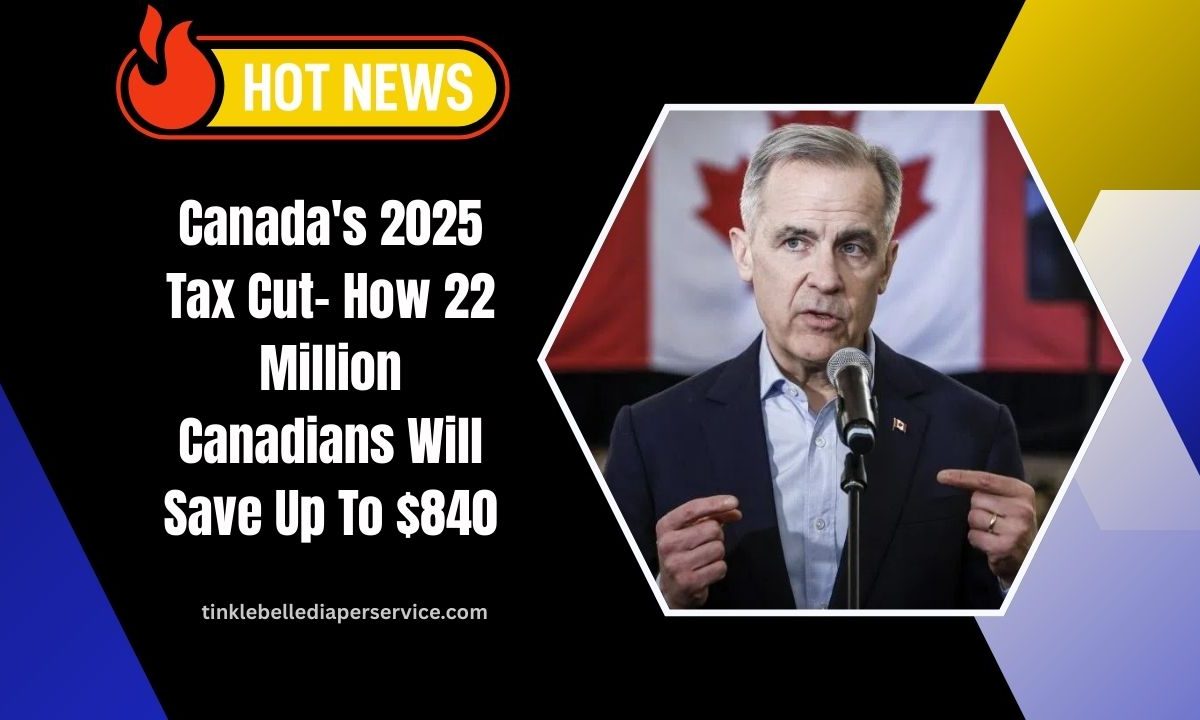In a significant move to alleviate financial pressures and stimulate economic growth, the Canadian government has announced a reduction in the lowest federal personal income tax rate from 15% to 14%, effective July 1, 2025.
This policy is expected to benefit approximately 22 million Canadians, delivering up to $840 in annual savings for two-income families starting in 2026.
Understanding the Tax Cut
Implementation Timeline:
- July 1, 2025: The tax rate for the lowest income bracket decreases to 14% for the remainder of the year.
- Full-Year 2025: Due to the mid-year implementation, the effective tax rate for 2025 will be 14.5%.
- 2026 and Beyond: The tax rate stabilizes at 14%, providing full-year benefits.
Targeted Income Brackets:
- First Bracket: Taxable income up to $57,375.
- Second Bracket: Taxable income between $57,375 and $114,750.
Projected Savings:
- Single Individuals: Up to $420 annually.
- Two-Income Families: Up to $840 annually.
- Total National Savings: Over $27 billion over five years, starting from 2025-26 .
Impact on Paychecks
Starting July 1, 2025, the Canada Revenue Agency (CRA) will update its payroll deduction tables to reflect the new tax rate.
Employees with income subject to source deductions (e.g., employment income, pensions) will see immediate increases in their take-home pay.
For those without source deductions, the tax savings will be realized when filing the 2025 tax return in spring 2026 .
Real-Life Scenarios
Scenario 1: Single Retail Worker
- Annual Income: $45,000
- Taxable Income After Deductions: Approximately $32,000
- Annual Savings: Approximately $320
Scenario 2: Dual-Income Family
- Combined Income: $90,000 ($45,000 each)
- Taxable Income After Deductions: Approximately $64,000
- Annual Savings: Approximately $640
Scenario 3: Part-Time Student
- Annual Income: $20,000
- Taxable Income After Tuition Credits: Approximately $7,000
- Annual Savings: Approximately $70
Economic Implications
This tax cut is part of Prime Minister Mark Carney’s broader strategy to make life more affordable for Canadians.
By increasing disposable income, the government aims to boost consumer spending, support local businesses, and foster economic resilience amid global uncertainties .
Preparing for the Tax Cut
1. Review Your Budget:
- Assess how the additional savings can be allocated towards debt repayment, savings, or essential expenses.
2. Update Payroll Information:
- Ensure your employer adjusts your tax withholdings starting July 1, 2025.
3. Plan for Tax Filing:
- Keep records of income and deductions to maximize benefits when filing your 2025 tax return.
4. Utilize Tax-Advantaged Accounts:
- Consider contributing to a Tax-Free Savings Account (TFSA) or Registered Retirement Savings Plan (RRSP) to further enhance your financial position.
5. Seek Professional Advice:
- Consult with a financial advisor to develop a strategy that aligns with your financial goals.
Comparative Overview
| Year | Tax Policy | Savings for Individuals | Target Group | Total National Savings |
|---|---|---|---|---|
| 2016 | Reduced second bracket from 22% to 20.5% | Up to $330 | Middle-income earners | Not specified |
| 2019 | Increased basic personal amount to $15,000 | Up to $300 | All taxpayers | Not specified |
| 2025 | Reduced lowest bracket from 15% to 14% | Up to $420 (individuals), $840 (families) | Low- and middle-income earners | Over $27 billion over 5 years |
Addressing Concerns
Inflation Impact:
- While the tax cut provides immediate relief, some economists argue that it may not fully offset the effects of ongoing inflation.
High-Income Earners:
- The policy primarily benefits those earning under $114,750, leaving higher-income individuals without direct relief.
Fiscal Responsibility:
- The projected $27 billion cost over five years raises questions about potential impacts on government services and programs.
The 2025 tax cut represents a significant step towards enhancing the financial well-being of millions of Canadians.
By understanding its implications and preparing accordingly, individuals and families can maximize the benefits of this policy change.
FAQs
Who qualifies for the new tax cut?
Canadians with taxable income under $114,750 in 2025, particularly those in the first bracket ($57,375 or less), will benefit from the tax cut.
When will I see the savings?
If your income is subject to source deductions, you’ll notice increased take-home pay starting July 1, 2025. Otherwise, the savings will be realized when you file your 2025 tax return in spring 2026.
How much will I save with the new tax rate cut?
Savings vary based on income: up to $420 for individuals and up to $840 for two-income families annually.

